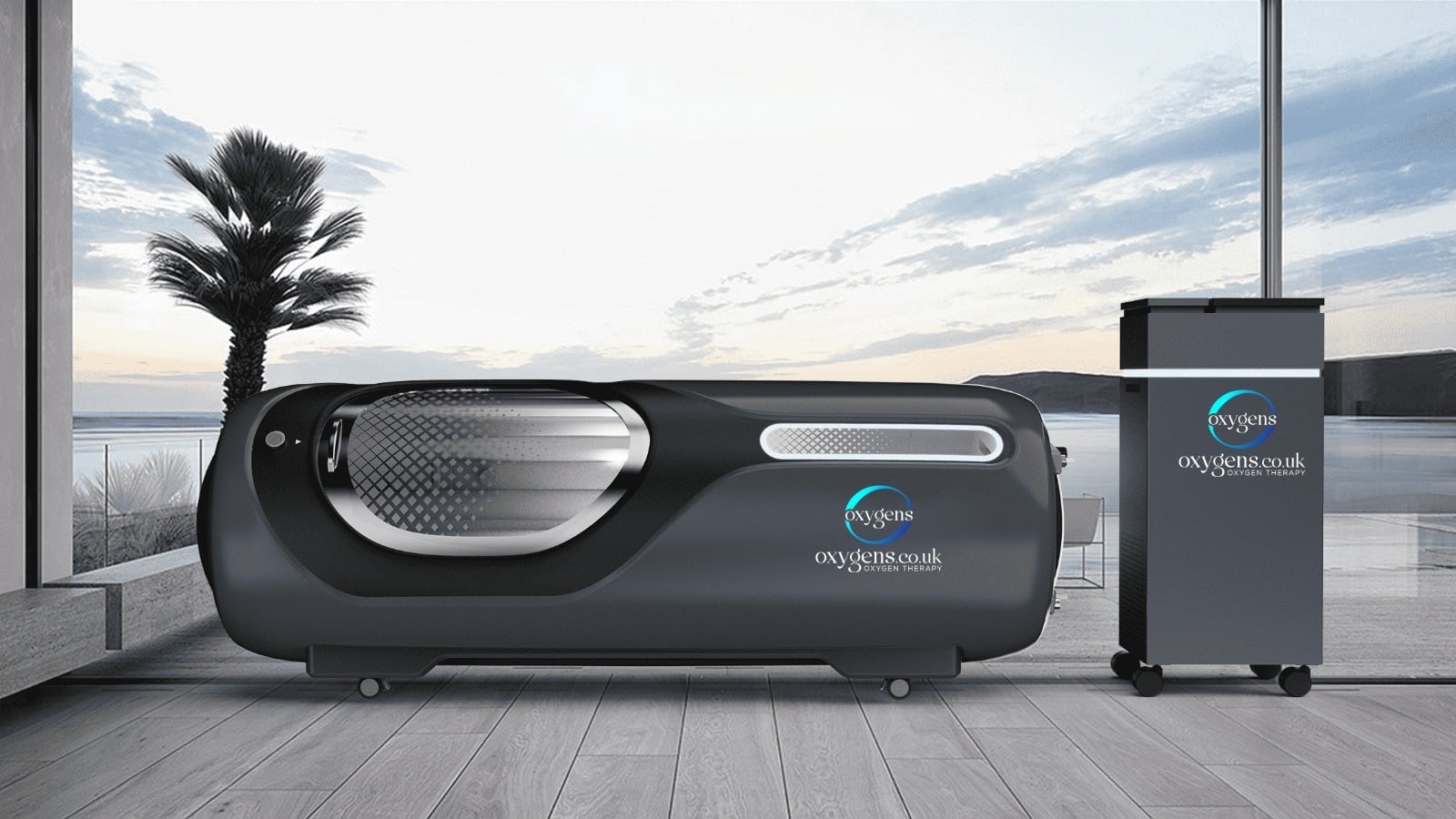Hyperbaric Oxygen Therapy (HBOT) for Endometriosis: A Promising New Approach
Endometriosis is a painful and often debilitating condition affecting millions of women worldwide. It occurs when tissue similar to the lining of the uterus, known as endometrium, grows outside the uterus. This tissue can cause inflammation, pain, and the formation of scar tissue (adhesions), leading to chronic pelvic pain, painful menstruation, and even infertility. While traditional treatments for endometriosis, such as hormonal therapy, pain management, and surgery, are widely used, innovative therapies like Hyperbaric Oxygen Therapy (HBOT) are gaining attention as potential adjunct treatments for managing the symptoms and complications of endometriosis.
What is Hyperbaric Oxygen Therapy (HBOT)?
Hyperbaric Oxygen Therapy involves breathing up to 100% oxygen in a pressurised environment, typically in a specially designed chamber. During the treatment, the air pressure in the chamber is raised higher than normal atmospheric pressure, allowing oxygen to be dissolved in the blood plasma. The oxygen-enriched blood is then transported throughout the body, promoting healing, reducing inflammation, and fighting infections more effectively.
Originally used to treat conditions such as decompression sickness and severe wounds, HBOT is now being explored for various chronic conditions, including endometriosis, where inflammation and tissue damage play a major role in the disease.
How Can HBOT Help Treat Endometriosis?
- Reduction of Inflammation
Endometriosis is a highly inflammatory condition, as the misplaced endometrial-like tissue causes a chronic immune response. HBOT has been shown to reduce inflammation by enhancing the production of anti-inflammatory cytokines. For women with endometriosis, this can mean a reduction in pelvic pain and other inflammatory symptoms. By decreasing the overall inflammatory load in the body, HBOT may offer relief from flare-ups and help manage the progression of the disease. - Improved Oxygenation of Affected Tissues
In endometriosis, areas of tissue that are affected by the disease often have poor blood flow and reduced oxygenation, which can impede healing and exacerbate pain. HBOT dramatically increases the amount of oxygen delivered to these areas, promoting faster healing and healthier tissue regeneration. This enhanced oxygenation may help repair the damage caused by endometrial lesions and adhesions, improving overall pelvic health. - Promotion of Tissue Healing and Regeneration
Women with endometriosis often experience scar tissue formation due to the cyclical bleeding and healing processes of the displaced endometrial-like tissue. HBOT stimulates the body’s natural healing mechanisms, including angiogenesis (the formation of new blood vessels), which improves tissue health and supports the repair of damaged areas. This could be especially helpful in preventing or reducing the buildup of scar tissue, adhesions, and fibrosis that can complicate endometriosis. - Pain Management
One of the most distressing symptoms of endometriosis is chronic pelvic pain, which can be debilitating and difficult to manage with conventional painkillers. HBOT has been shown to have analgesic effects, which may help reduce pain in women with endometriosis. The increased oxygen supply promotes better healing and may reduce nerve pain caused by the inflammation and pressure of endometrial lesions on surrounding nerves. - Reducing Oxidative Stress
Research has found that women with endometriosis tend to have higher levels of oxidative stress, which can further aggravate the condition by damaging surrounding tissues and contributing to inflammation. HBOT helps to reduce oxidative stress by neutralizing harmful free radicals, thus protecting cells and tissues from further damage. This may help slow the progression of endometriosis and alleviate symptoms.
Clinical Evidence Supporting HBOT for Endometriosis
Though HBOT is still an emerging therapy in the context of endometriosis, early research and case studies are promising. Studies have demonstrated HBOT’s effectiveness in reducing inflammation and promoting healing in other chronic conditions, and these findings have led researchers to investigate its potential in treating endometriosis specifically.
For example, one study conducted on animal models of endometriosis showed that HBOT significantly reduced the size and number of endometriotic lesions, as well as the level of inflammation in the affected tissues. This suggests that HBOT could help shrink endometrial implants and reduce the severity of the disease in humans.
Additionally, some research shows that HBOT has been successfully used to treat pelvic inflammatory disease and other gynecological conditions that share similarities with endometriosis, which could provide a strong basis for its use in managing endometriosis-related symptoms.
Benefits of HBOT Beyond Endometriosis
Aside from its potential to treat the symptoms of endometriosis, HBOT offers additional health benefits that could be advantageous for women suffering from this condition. For instance, women with endometriosis are often at a higher risk of developing infertility due to the damage and scarring in the reproductive organs. By promoting tissue healing and reducing inflammation, HBOT could improve fertility outcomes for some women.
Furthermore, women who have undergone surgery for endometriosis, such as a laparoscopy to remove endometrial lesions, may benefit from HBOT as part of their post-operative recovery. HBOT can accelerate healing, reduce the risk of infections, and help prevent the formation of new scar tissue, all of which are crucial for recovery and future reproductive health.
What to Expect During HBOT Treatment
If you’re considering HBOT as a treatment option for endometriosis, it’s important to know what to expect. A typical course of treatment involves multiple sessions in a hyperbaric chamber. Each session lasts between 60 and 90 minutes, during which you’ll breathe 100% oxygen while the chamber’s pressure is elevated to two or three times higher than normal atmospheric pressure. The number of sessions you require will depend on the severity of your condition and how well you respond to the therapy.
HBOT is generally considered safe, but there are some potential side effects, including ear discomfort due to changes in pressure, temporary vision changes, and, in rare cases, oxygen toxicity. It’s important to undergo HBOT under the supervision of a qualified medical professional to minimize these risks.
Is HBOT Right for You?
While HBOT is not yet a mainstream treatment for endometriosis, it is gaining traction as a complementary therapy that can be used alongside traditional treatments like surgery, hormonal therapy, and pain management. If you’ve been struggling to manage your endometriosis symptoms or are looking for ways to enhance your recovery after surgery, HBOT may offer a new avenue of relief.
Before starting HBOT, it’s essential to consult with a healthcare provider who specializes in hyperbaric medicine and is familiar with endometriosis. They can assess your individual case, review your medical history, and determine whether HBOT is a suitable option for you.

Conclusion
Hyperbaric Oxygen Therapy represents an exciting frontier in the treatment of endometritis, especially for women dealing with chronic or severe forms of the condition. By enhancing oxygen delivery, reducing inflammation, and boosting the immune system, HBOT offers a unique and promising way to support the body’s natural healing processes. As research in this area continues to expand, HBOT could become an essential component of comprehensive care for women with endometritis, helping them recover faster and with fewer complications.
If you’re looking for innovative, holistic approaches to treat endometritis, it may be worth exploring how HBOT can complement traditional therapies and support your journey toward healing.
Studies for HyperBaric Therapy in Endometriosis
Kızılyel O, Mete Ural U, Acar B, et al. Hyperbaric oxygen therapy is effective in treatment of endometriosis: a pilot study. J Obstet Gynaecol Res. 2016;42(6):683-689. doi:10.1111/jog.12941
Tancer ML, Patel D, Dubin NH, et al. Hyperbaric oxygen therapy for the treatment of endometriosis. Undersea Hyperb Med. 2017;44(5):429-435. PMID: 28926085.
Fattori B, Nascimento LHM, Teixeira JM, et al. Hyperbaric oxygen therapy modulates serum cytokine profiles in fibromyalgia patients. J Pain Res. 2018;11:2867-2874. doi:10.2147/JPR.S179984
Lin HC, Chang CH, Chen YA, et al. Hyperbaric oxygen therapy improves local and systemic anti-inflammatory and proangiogenic indices in an ischemic random flap model. Ann Plast Surg. 2015;75(5):557-563. doi:10.1097/SAP.0000000000000535
Zhang L, Zhou G, Song W, et al. Effects of hyperbaric oxygen therapy on fibrosis and inflammation in diabetic wounds. Mol Med Rep. 2017;16(5):7271-7278. doi:10.3892/mmr.2017.7677
Feldmeier JJ, Heimbach RD, Davolt DA, Court WS, Stegmann BJ, Sheffield PJ. Hyperbaric oxygen — 2003: indications and results: the hyperbaric oxygen therapy committee report. Undersea Hyperb Med. 2003;30 Suppl:S1-S48. PMID: 14703050.


